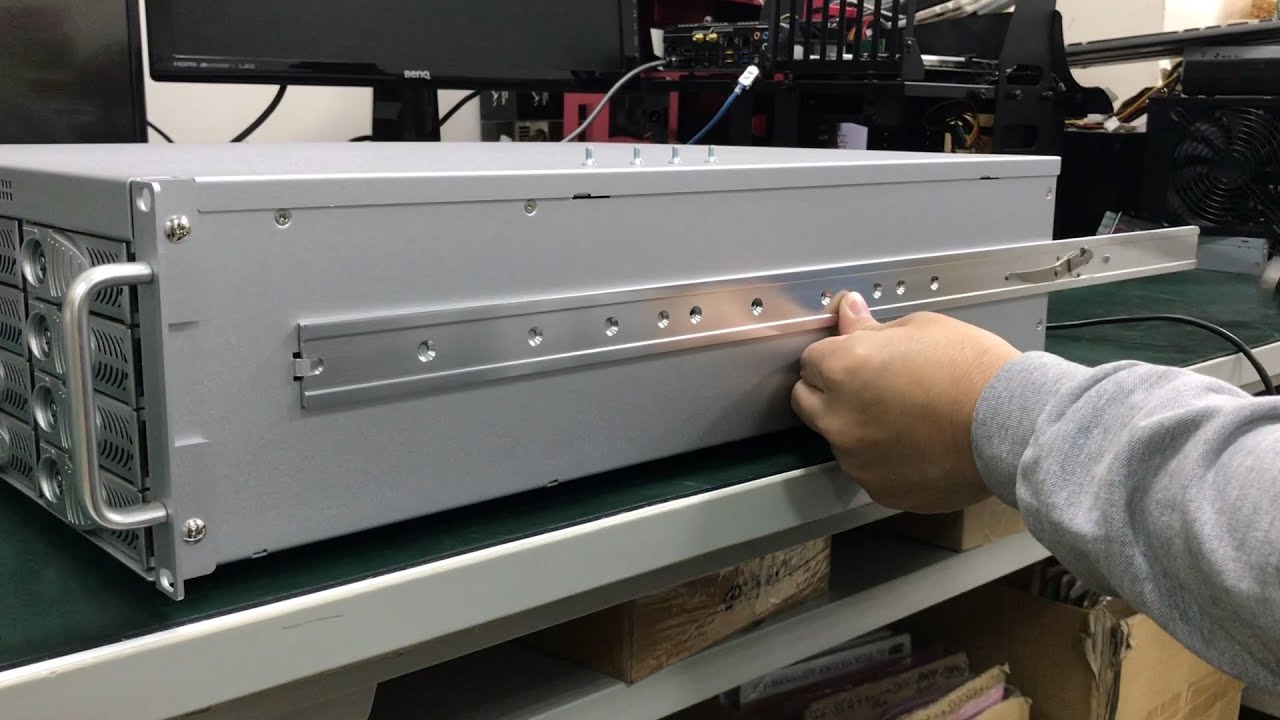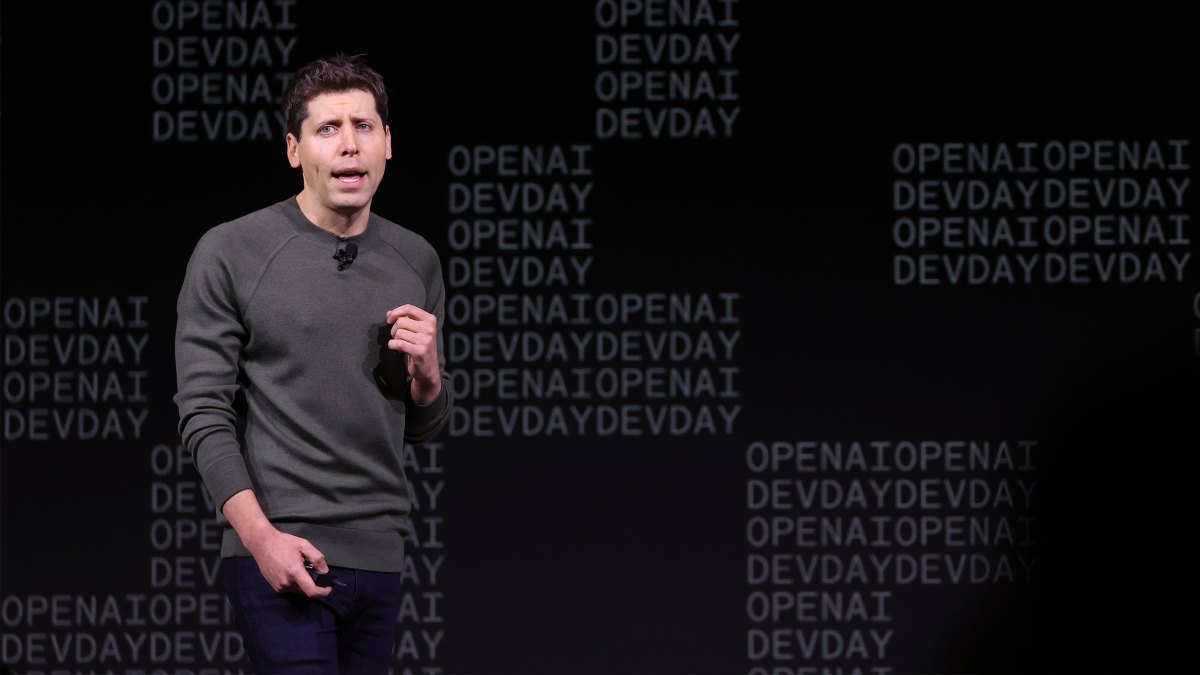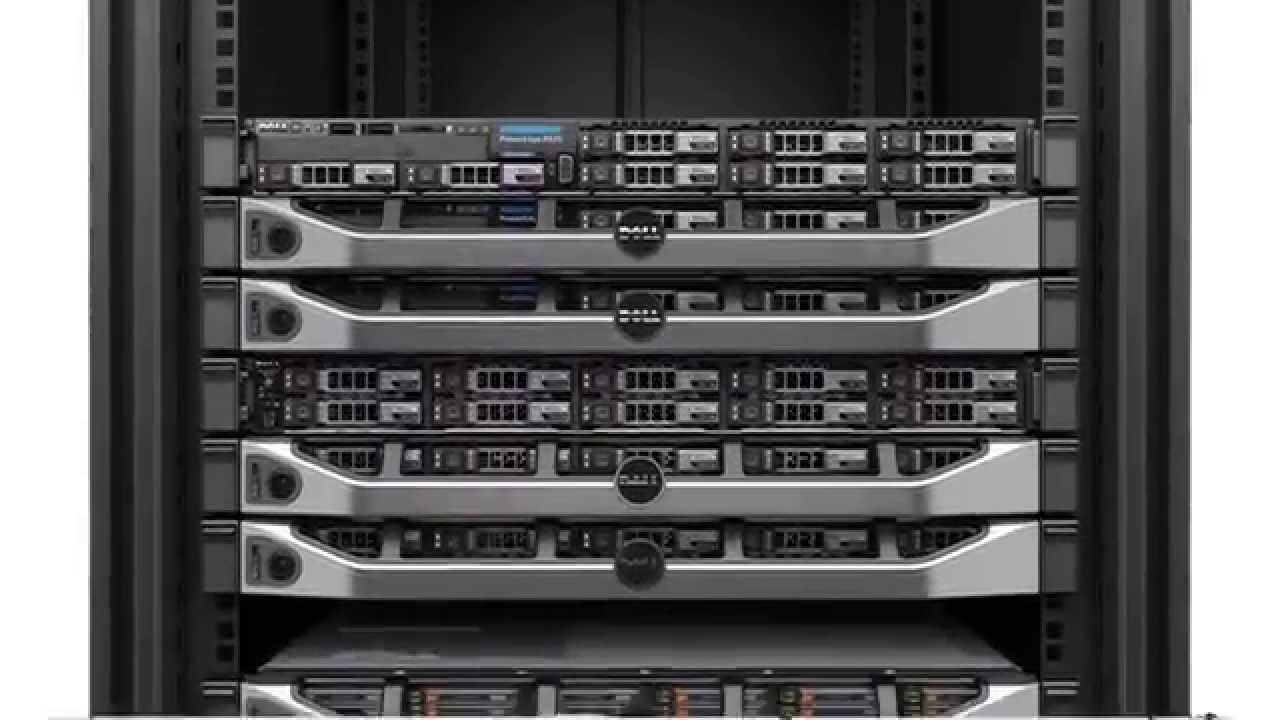Technology
How IT leaders can spearhead the charge to transform education

Presented by MSI
If a primary goal of education is to prepare kids for the future, IT leaders play a more pivotal role than ever. Technology has profoundly impacted work in every industry — and it’s opened up vast new possibilities in new fields, from positions across STEM industries and AI, to esports and beyond. It’s also transformed how students engage with learning, skill development and high-level problem-solving and critical thinking.
“Exposing students to computer science and high-end technology is not only useful for the future as they inevitably use it in their careers, but it changes their relationship to school,” says Mat Holley, esports program manager at MSI. “When they’re more engaged, they have better attendance. They have better grades. They’re more prepared for college and the job market. The enthusiasm is remarkable.”
School boards are leading the charge for these initiatives, but they can’t do it on their own. They must partner with IT leaders in their district, education specialists and technology industry professionals to deliver these learning experiences, and the challenge is to ensure that these programs are cost-effective, with technology, expertise and activities that are future-proof.
How technology is transforming the learning experience
To support these initiatives, the choice of hardware and software becomes critical. Holley points to the extracurricular club in the charter school district in Chula Vista, San Diego he worked with to help develop and outfit new technology learning initiatives. Students there work on video design, broadcasting, AI and music creation using Vector GP and Raider GE series laptops from MSI, integrating graphics hardware from Nvidia and processing power from Intel. And this high-end gaming hardware and software supports what’s become the largest high school-run esports program in the U.S., the Kern High School District Esports League.
“I’ve worked with schools that are far along their journey and ready to level up their hardware, to keep pace with how the kids are working and learning, and I’ve also helped districts build the programs from the ground up, from the right hardware to student outreach,” Holley explains. “And though much of this is uncharted territory, the momentum is building, sometimes through word of mouth.”
The surprising benefits of esports
Educators are sharing knowledge, sparking interest and collaborating with their peers, working toward developing a curriculum standard and blueprint for the hardware and software specifications that can support those programs.
Though it’s initially surprised many educators and leaders that esports can have such a profound effect on kids — especially the ones who often feel excluded from other sports — the number of esports programs is growing. Not only are there tremendous educational and social development benefits for the students that participate, esports also attracts kids who have never joined an extracurricular club: the girls who have felt left out in science and math classes, the BIPOC students who deserve bigger opportunities. The clubs raise their confidence in their own abilities, and more often than not, these students go on to study computer science or some other linked technology career.
“There is no barrier to entry to be a gamer, and this goes for computer science at large,” Holley says. “You don’t even have to be a gamer to enter these clubs. More and more, esports is plugged into all the various technology clubs like design, broadcasting and journalism, and formerly disenfranchised kids are finding their calling through these clubs in an unprecedented way.”
Building the learning experience from the ground up
Of course, there continue to be challenges for school districts developing these programs, and many of them come down to major budget constraints. There are also the difficulties that come with ensuring security is solid, that new technology is integrated into existing networks, and moving the environment from on-prem to the cloud. MSI collaborates with educational institutions to ensure that they’re not only hitting the district’s hardware specs, but new hardware will be integrated seamlessly.
“As we saw more esports integrated into schools, we worked with schools to meet the specifications of their price points, their warranty needs, which are typically longer than a retail warranty,” Holley says. “We wanted to also make sure that these were machines that the students got excited to play on, that sophisticated esports titles were supported. As we started to work with more schools closely, we integrated products from our professional line to improve the student experience and give them access to even more tech areas to explore.”
Educational IT leaders rejoice: adding computer labs like these is easier than ever. As computing advances, the size of the hardware continues to shrink, making student computers lightweight and easy for IT teams to deploy. IT leaders should also look for hardware that’s easy to integrate, especially from a security point of view — however, most districts are working with legacy hardware environments.
“As you build a technology center for students, you have to consider whether existing hardware will play with the new, and whether it will move to the cloud securely,” Holley says. “But as long as we can integrate security standards like content filters, custom imaging and Autopilot deployment, it’s much easier to deploy at scale in almost any environment. We try to build directly in tandem with district-wide IT departments, so they can tell us what they need and what their road map looks like. Then from the manufacturer side, we’re able to make sure that we all play along in the years to come.”
Another major consideration is product life cycles, which are incredibly short in the consumer world. IT leaders should work with a partner that offers dedicated hardware for education, with life cycles long enough to mesh with the fairly long bidding and buying timeline for education purchases.
And of course, as cloud computing becomes the standard, it’s important to stay abreast of hardware and software changes and evolving risk scenarios. That means research, testing and working with your supplier to keep informed about the newest hardware and software advancements and when it’s time to upgrade. It also means selecting hardware that’s easily upgradable and expandable.
Making hardware choices a whole lot easier
To support technology education, MSI offers the Cubi NUC and DP21, which support Intel vPro and Windows Autopilot to simplify management, enhance security and streamline the deployment process. Thunderbolt 4 technology and power delivery offer fast connectivity and charging. They’re also easily scalable, and offer real-time data processing for AI and machine learning. Their compact size offers flexible installation and a good performance vs. footprint ratio, plus flexible configuration.
The company also offers STEM, gaming and content creation computers like the DP180, CreatorPro, Vector GP and Raider GE series laptops with dedicated graphics hardware that accelerate graphics-heavy applications, and offer easy upgradability with expandable memory and storage options to ensure longevity.
Veteran resellers and manufacturers will work with decision-makers to ensure schools get the best hardware and software their money can buy, plus keep IT teams in the loop what’s coming next, and how to make sure students have every opportunity to learn with the newest technology possible.
“We’re paving a path for these students into the future, and it’s important that we’re equipping them for everything that’s to come,” Holley says. “Gaming and other high-tech hardware has become an integral part of the plan, so IT leaders must be willing to get creative when designing technology resources and work with allies across manufacturing and reselling to push initiatives forward.”
Dig deeper: Learn more here about the technology solutions that power today’s educational experiences.
Sponsored articles are content produced by a company that is either paying for the post or has a business relationship with VentureBeat, and they’re always clearly marked. For more information, contact
Servers computers
New Slide Rail Installation

This video gives instructions on how to install the new slide rails on rackmount enclosure.
source
Technology
Vera AI launches ‘AI Gateway’ to help companies safely scale AI without the risks

Join our daily and weekly newsletters for the latest updates and exclusive content on industry-leading AI coverage. Learn More
Vera AI Inc., a startup focused on responsible artificial intelligence deployment, announced today the general availability of its AI Gateway platform. The system aims to help organizations more quickly and safely implement AI technologies by providing customizable guardrails and model routing capabilities.
“We’re really excited to be announcing the general availability of our model routing and guardrails platform,” said Liz O’Sullivan, CEO and co-founder of Vera, in an interview with VentureBeat. “We’ve been hard at work over the last year building something that could scalably and repeatably accelerate time to production for the kinds of business use cases that actually stand to generate a lot of excitement.”

Bridging the gap: How Vera’s AI gateway tackles last-mile challenges
The launch comes at a time when many companies are eager to adopt generative AI and other advanced AI technologies, but remain hesitant due to potential risks and challenges in implementing safeguards. Vera’s platform sits between users and AI models, enforcing policies and optimizing costs across different types of AI requests.
“Businesses are only ever interested in doing one of three things, whether that’s make more money, save more money, or reducing risk,” O’Sullivan explained. “We’ve focused ourselves squarely on the last mile problems, which people think, just like regular software engineering, that it’s going to be quick and easy, that these are just afterthoughts that you can apply to optimize costs or to reduce risks associated with things like disinformation and broad and CSAM, but they’re actually quite hard.”
Justin Norman, CTO and co-founder of Vera, emphasized the importance of nuance in AI policy implementation: “You want to be able to set the bar for where your system will respond and where it will not respond and what it will do, without having to rely upon what some other companies made a decision for you on.”

From AI safety activism to startup success: The minds behind Vera
The company’s approach appears to be gaining traction. According to O’Sullivan, Vera is already “processing tens of thousands of model requests per month across a handful of paying customers.” The startup offers API-based pricing at one cent per call, aligning its incentives with customer success in AI deployment.
Vera’s launch is particularly noteworthy given the founders’ backgrounds. O’Sullivan, who serves on the National AI Advisory Committee, has a history of AI safety activism, including her work at Clarifai. Norman brings experience from government, academia, and industry, including PhD work at UC Berkeley focused on AI robustness and evaluation.
Navigating the AI safety landscape: Vera’s role in responsible innovation
As AI adoption accelerates across industries, platforms like Vera’s could play a crucial role in addressing safety and ethical concerns while enabling innovation. The startup’s focus on customizable guardrails and efficient model routing positions it well to serve both enterprise clients managing internal AI use and companies developing consumer-facing AI applications.
However, Vera faces a competitive landscape with other AI safety and deployment startups also vying for market share. The company’s success will likely depend on its ability to demonstrate clear value to customers and stay ahead of rapidly evolving AI technologies and associated risks.
For organizations looking to responsibly implement AI, Vera’s launch offers a new option to consider. As O’Sullivan put it, “We’re here to make it as easy as possible to enjoy the benefits of AI while reducing the risks that things do go wrong.”
Source link
Technology
OpenAI raises $6.6B and is now valued at $157B

ChatGPT maker OpenAI has closed the largest VC round of all time.
The startup today announced that it raised $6.6 billion in a funding round that values OpenAI at $157 billion post-money. Led by previous investor Thrive Capital, the new cash brings OpenAI’s total raised to $17.9 billion, per Crunchbase.
Thrive invested around $1.3 billion, per The New York Times, with an exclusive option to invest up to $1 billion more at the same valuation (through 2025). Microsoft, Nvidia, SoftBank, Khosla Ventures, Altimeter Capital, Fidelity, and MGX also participated in the fundraising.
“The new funding will allow us to double down on our leadership in frontier AI research, increase compute capacity, and continue building tools that help people solve hard problems,” the company wrote in a blog post. “We’re grateful to our investors for their trust in us, and we look forward to working with our partners, developers, and the broader community to shape an AI-powered ecosystem and future that benefits everyone.”
There may be unusual strings attached. This morning, the Financial Times reported that OpenAI asked investors to avoid backing rival startups such as Anthropic and xAI. We’ve reached out to the company for more information and will update this post when we hear back.
OpenAI was already the world’s best-funded AI startup. But the mammoth new tranche puts the San Francisco company in a category all its own.
Elon Musk’s AI venture, the aforementioned xAI, raised over $6 billion earlier this year, but at a valuation dwarfed by OpenAI’s ($24 billion post-money). Chief OpenAI rival Anthropic has secured just over half OpenAI’s total ($9.7 billion) since its founding, while high-profile AI ventures Cohere and Mistral’s capital war chests are hovering around $1 billion.
So why did OpenAI need to raise more cash than the government of Zimbabwe spent in 2021? Well, quite simply, to sustain its sprawling operations. OpenAI is reportedly burning through billions training and productizing its AI systems — systems like the recently debuted o1 — and recruiting coveted data science talent to stay apace with the competition.
According to The Information, OpenAI has spent roughly $7 billion on model training and $1.5 billion on staffing. (OpenAI CEO Sam Altman has said that one of the company’s older leading models, GPT-4, cost more than $100 million to train.) And at one point in time, ChatGPT alone was said to be costing OpenAI $700,000 a day to run.
OpenAI is far and away the market leader in generative AI. ChatGPT has more than 250 million users (around 10 million of which are paying subscribers), and OpenAI’s annualized revenue has reportedly eclipsed $3.4 billion. ChatGPT alone could bring in $2.7 billion this year, The New York Times reports, citing internal OpenAI docs.
Microsoft, OpenAI’s close partner and investor (it’s put in over $13 billion), has built an entire suite of productivity products on top of OpenAI models. And Apple is integrating ChatGPT with its Apple Intelligence lineup of AI technology.
OpenAI optimistically projects its revenue will reach $100 billion in 2029 — matching the current annual sales of Nestlé. But it faces competition on many fronts.
Startups like Runway and Luma Labs have beat OpenAI to market with high-fidelity video generation models. (OpenAI’s own video model, Sora, is expected to launch sometime this fall.) Anthropic continues to build out an AI product suite to rival ChatGPT. xAI, Google and Amazon are investing heavily in infrastructure to train powerful next-generation models, and Meta — along with upstarts such as Black Forest Labs — continue to release open models on their quest to commoditize text- and image-generating AI.
The competitive pressures are such that OpenAI may steeply increase the price of its premium ChatGPT plan, ChatGPT Plus, from $20 per month to $44 per month by 2029 — and revamp its corporate structure to attract more investments.
The for-profit division of OpenAI is currently governed by a nonprofit that caps investors’ returns. But Altman is said to have signaled that OpenAI will move away from nonprofit governance in the next few months. Reuters reported earlier that the close of the $6.6 billion round was contingent on this, in fact — and Altman possibly receiving equity.
According to Bloomberg, investors in the new round will be able to claw back their cash if OpenAI doesn’t complete the conversion from nonprofit to for-profit within two years.
Unfettering its ability to raise could give OpenAI greater freedom to explore capital-intensive, longer-term bets, like AI chips — and entire datacenters — to lessen its reliance on Nvidia. (Nvidia makes the hardware on which OpenAI trains and runs many of its models.) It’ll also refill the company’s coffers to ink licensing agreements with data providers such as Reddit and Condé Nast — agreements that could give OpenAI a competitive edge while at the same time shielding it from IP lawsuits.
Whether it’ll be able to execute is another question. OpenAI’s been shedding high-profile execs in recent weeks, the culmination of disagreements over the company’s direction.
CTO Mira Murati, chief research officer Bob McGrew, and research VP Barret Zoph announced their resignations in late September. Prominent research scientist Andrej Karpathy left OpenAI in February; months later, OpenAI co-founder and former chief scientist Ilya Sutskever quit, along with former safety leader Jan Leike. In August, co-founder John Schulman said he would leave. And Greg Brockman, OpenAI’s president, is on sabbatical through the end of the year.
Of the 13 people who helped found OpenAI in 2015, only three remain.
Servers computers
Fujitsu PRIMERGY RX300 S5 Rack Server

c-tec, the Fujitsu Community for experts, only: http://c-tec.ts.fujitsu.com
Fujitsu PRIMERGY RX300 S5 Server Rack .
source
Technology
Apple is bringing back Sugar for season 2

Another beloved Apple TV Plus show is getting a second season. The streamer announced today that the detective series Sugar, which stars Colin Farrell in the titular role, has been renewed for season 2. It’s not clear yet when the show will return.
Sugar debuted earlier this year. And while it started out as a clever story about a private investigator, a big twist midway through the first season — you can read about it here, but (obviously) spoilers abound — pushed it into sci-fi territory, a space Apple has been very successful in. There aren’t many details about the upcoming season, but in a press release, Apple says that “season two will see Sugar back in Los Angeles, taking on another missing persons case as he continues to look for answers surrounding his missing sister.”
Servers computers
PowerEdge R630 Rack Server

DELL PowerEdge R630 Tipo Rack (1U)
(1) Intel Xeon E5-2620 V3 (2.40GHz, 15M Cache, 6-Core), Chipset Intel C610, 32GB Memory (2x16Gb), 2300MT/s Dual Ranked exp to 384GB (12 ranuras DIMM), 4 x 300GB SAS 15K RPM 2.5″ Hotplug, Internal DVD+/-RW Drive, PERC H730 Integrated RAID Controller 1GB Cache, iDRAC8 Enterprise (Administracion Remota), Broadcom Quad Port 1GbE NIC, Fuente de Poder Redundante 750 Watts, Garantía DELL en sitio de 36 meses, * (teclado y mouse opcionales)
Para consultas por favor rellenar este formulario:
http://www.officecomputer.com.bo/pag.php?id=162665
NEGOCIO EN LINEA (18 años – Ventas por Internet)
3er.Anillo Interno N.3185 Entre Av.Beni y Av.Alemana
Casi Av.Alemana (40 Metros antes sobre el tercer anillo),
Edif 3 Pisos Planta Baja (Lado de “Chinga Decoraciones”)
Telf.: (591-3)3418191 (591-3)3418340 Cel: (591)78512314 (591)75665856
Santa Cruz de la Sierra, Bolivia .
source
-

 Womens Workouts1 week ago
Womens Workouts1 week ago3 Day Full Body Women’s Dumbbell Only Workout
-

 Technology2 weeks ago
Technology2 weeks agoWould-be reality TV contestants ‘not looking real’
-

 Science & Environment2 weeks ago
Science & Environment2 weeks agoHyperelastic gel is one of the stretchiest materials known to science
-

 Science & Environment2 weeks ago
Science & Environment2 weeks ago‘Running of the bulls’ festival crowds move like charged particles
-

 Science & Environment2 weeks ago
Science & Environment2 weeks agoMaxwell’s demon charges quantum batteries inside of a quantum computer
-

 Science & Environment2 weeks ago
Science & Environment2 weeks agoHow to unsnarl a tangle of threads, according to physics
-

 Science & Environment2 weeks ago
Science & Environment2 weeks agoHow to wrap your mind around the real multiverse
-

 News1 week ago
News1 week agoOur millionaire neighbour blocks us from using public footpath & screams at us in street.. it’s like living in a WARZONE – WordupNews
-

 Science & Environment2 weeks ago
Science & Environment2 weeks agoLiquid crystals could improve quantum communication devices
-

 Science & Environment2 weeks ago
Science & Environment2 weeks agoSunlight-trapping device can generate temperatures over 1000°C
-

 Science & Environment2 weeks ago
Science & Environment2 weeks agoITER: Is the world’s biggest fusion experiment dead after new delay to 2035?
-

 Science & Environment2 weeks ago
Science & Environment2 weeks agoPhysicists are grappling with their own reproducibility crisis
-

 Science & Environment2 weeks ago
Science & Environment2 weeks agoQuantum ‘supersolid’ matter stirred using magnets
-

 News2 weeks ago
News2 weeks agoYou’re a Hypocrite, And So Am I
-

 Science & Environment2 weeks ago
Science & Environment2 weeks agoWhy this is a golden age for life to thrive across the universe
-

 Science & Environment2 weeks ago
Science & Environment2 weeks agoQuantum forces used to automatically assemble tiny device
-

 Sport2 weeks ago
Sport2 weeks agoJoshua vs Dubois: Chris Eubank Jr says ‘AJ’ could beat Tyson Fury and any other heavyweight in the world
-

 Science & Environment2 weeks ago
Science & Environment2 weeks agoNuclear fusion experiment overcomes two key operating hurdles
-

 Science & Environment2 weeks ago
Science & Environment2 weeks agoCaroline Ellison aims to duck prison sentence for role in FTX collapse
-

 Science & Environment2 weeks ago
Science & Environment2 weeks agoNerve fibres in the brain could generate quantum entanglement
-

 Science & Environment2 weeks ago
Science & Environment2 weeks agoTime travel sci-fi novel is a rip-roaringly good thought experiment
-

 Science & Environment2 weeks ago
Science & Environment2 weeks agoLaser helps turn an electron into a coil of mass and charge
-

 News2 weeks ago
News2 weeks agoIsrael strikes Lebanese targets as Hizbollah chief warns of ‘red lines’ crossed
-

 CryptoCurrency2 weeks ago
CryptoCurrency2 weeks agoCardano founder to meet Argentina president Javier Milei
-

 Science & Environment1 week ago
Science & Environment1 week agoMeet the world's first female male model | 7.30
-

 Womens Workouts2 weeks ago
Womens Workouts2 weeks agoBest Exercises if You Want to Build a Great Physique
-

 Science & Environment2 weeks ago
Science & Environment2 weeks agoA slight curve helps rocks make the biggest splash
-

 News2 weeks ago
News2 weeks ago▶️ Media Bias: How They Spin Attack on Hezbollah and Ignore the Reality
-

 Science & Environment2 weeks ago
Science & Environment2 weeks agoWhy we need to invoke philosophy to judge bizarre concepts in science
-

 CryptoCurrency2 weeks ago
CryptoCurrency2 weeks agoBitcoin miners steamrolled after electricity thefts, exchange ‘closure’ scam: Asia Express
-

 CryptoCurrency2 weeks ago
CryptoCurrency2 weeks agoDZ Bank partners with Boerse Stuttgart for crypto trading
-

 CryptoCurrency2 weeks ago
CryptoCurrency2 weeks agoBitcoin bulls target $64K BTC price hurdle as US stocks eye new record
-

 CryptoCurrency2 weeks ago
CryptoCurrency2 weeks agoEthereum is a 'contrarian bet' into 2025, says Bitwise exec
-

 Womens Workouts2 weeks ago
Womens Workouts2 weeks agoEverything a Beginner Needs to Know About Squatting
-

 News1 week ago
News1 week agoFour dead & 18 injured in horror mass shooting with victims ‘caught in crossfire’ as cops hunt multiple gunmen
-

 Womens Workouts1 week ago
Womens Workouts1 week ago3 Day Full Body Toning Workout for Women
-

 Travel1 week ago
Travel1 week agoDelta signs codeshare agreement with SAS
-

 Politics1 week ago
Politics1 week agoHope, finally? Keir Starmer’s first conference in power – podcast | News
-
News2 weeks ago
the pick of new debut fiction
-

 Science & Environment2 weeks ago
Science & Environment2 weeks agoQuantum time travel: The experiment to ‘send a particle into the past’
-

 CryptoCurrency2 weeks ago
CryptoCurrency2 weeks agoDorsey’s ‘marketplace of algorithms’ could fix social media… so why hasn’t it?
-

 CryptoCurrency2 weeks ago
CryptoCurrency2 weeks agoRedStone integrates first oracle price feeds on TON blockchain
-

 CryptoCurrency2 weeks ago
CryptoCurrency2 weeks agoLow users, sex predators kill Korean metaverses, 3AC sues Terra: Asia Express
-

 Sport2 weeks ago
Sport2 weeks agoUFC Edmonton fight card revealed, including Brandon Moreno vs. Amir Albazi headliner
-

 CryptoCurrency2 weeks ago
CryptoCurrency2 weeks agoBlockdaemon mulls 2026 IPO: Report
-

 Technology2 weeks ago
Technology2 weeks agoiPhone 15 Pro Max Camera Review: Depth and Reach
-

 News2 weeks ago
News2 weeks agoBrian Tyree Henry on voicing young Megatron, his love for villain roles
-

 CryptoCurrency2 weeks ago
CryptoCurrency2 weeks agoCoinbase’s cbBTC surges to third-largest wrapped BTC token in just one week
-

 News1 week ago
News1 week agoWhy Is Everyone Excited About These Smart Insoles?
-

 Health & fitness2 weeks ago
Health & fitness2 weeks agoThe maps that could hold the secret to curing cancer
-

 Science & Environment2 weeks ago
Science & Environment2 weeks agoBeing in two places at once could make a quantum battery charge faster
-

 Science & Environment2 weeks ago
Science & Environment2 weeks agoA new kind of experiment at the Large Hadron Collider could unravel quantum reality
-

 Science & Environment2 weeks ago
Science & Environment2 weeks agoHow one theory ties together everything we know about the universe
-

 Science & Environment2 weeks ago
Science & Environment2 weeks agoFuture of fusion: How the UK’s JET reactor paved the way for ITER
-

 Science & Environment2 weeks ago
Science & Environment2 weeks agoHow do you recycle a nuclear fusion reactor? We’re about to find out
-

 Science & Environment2 weeks ago
Science & Environment2 weeks agoTiny magnet could help measure gravity on the quantum scale
-

 CryptoCurrency2 weeks ago
CryptoCurrency2 weeks agoCrypto scammers orchestrate massive hack on X but barely made $8K
-

 CryptoCurrency2 weeks ago
CryptoCurrency2 weeks agoTelegram bot Banana Gun’s users drained of over $1.9M
-

 CryptoCurrency2 weeks ago
CryptoCurrency2 weeks agoVonMises bought 60 CryptoPunks in a month before the price spiked: NFT Collector
-

 CryptoCurrency2 weeks ago
CryptoCurrency2 weeks ago‘No matter how bad it gets, there’s a lot going on with NFTs’: 24 Hours of Art, NFT Creator
-

 CryptoCurrency2 weeks ago
CryptoCurrency2 weeks agoSEC asks court for four months to produce documents for Coinbase
-
Business2 weeks ago
How Labour donor’s largesse tarnished government’s squeaky clean image
-

 News2 weeks ago
News2 weeks agoBrian Tyree Henry on voicing young Megatron, his love for villain roles
-

 Womens Workouts2 weeks ago
Womens Workouts2 weeks agoHow Heat Affects Your Body During Exercise
-

 Womens Workouts2 weeks ago
Womens Workouts2 weeks agoKeep Your Goals on Track This Season
-

 Science & Environment1 week ago
Science & Environment1 week agoX-rays reveal half-billion-year-old insect ancestor
-

 Science & Environment2 weeks ago
Science & Environment2 weeks agoUK spurns European invitation to join ITER nuclear fusion project
-

 News2 weeks ago
News2 weeks agoChurch same-sex split affecting bishop appointments
-

 Technology2 weeks ago
Technology2 weeks agoFivetran targets data security by adding Hybrid Deployment
-

 CryptoCurrency2 weeks ago
CryptoCurrency2 weeks ago$12.1M fraud suspect with ‘new face’ arrested, crypto scam boiler rooms busted: Asia Express
-

 CryptoCurrency2 weeks ago
CryptoCurrency2 weeks agoDecentraland X account hacked, phishing scam targets MANA airdrop
-

 CryptoCurrency2 weeks ago
CryptoCurrency2 weeks agoCertiK Ventures discloses $45M investment plan to boost Web3
-

 CryptoCurrency2 weeks ago
CryptoCurrency2 weeks agoBeat crypto airdrop bots, Illuvium’s new features coming, PGA Tour Rise: Web3 Gamer
-

 CryptoCurrency2 weeks ago
CryptoCurrency2 weeks ago‘Silly’ to shade Ethereum, the ‘Microsoft of blockchains’ — Bitwise exec
-

 CryptoCurrency2 weeks ago
CryptoCurrency2 weeks agoVitalik tells Ethereum L2s ‘Stage 1 or GTFO’ — Who makes the cut?
-

 CryptoCurrency2 weeks ago
CryptoCurrency2 weeks agoEthereum falls to new 42-month low vs. Bitcoin — Bottom or more pain ahead?
-
Business2 weeks ago
Thames Water seeks extension on debt terms to avoid renationalisation
-
Politics2 weeks ago
‘Appalling’ rows over Sue Gray must stop, senior ministers say | Sue Gray
-

 Politics2 weeks ago
Politics2 weeks agoLabour MP urges UK government to nationalise Grangemouth refinery
-

 News2 weeks ago
News2 weeks agoBrian Tyree Henry on his love for playing villains ahead of “Transformers One” release
-
Politics2 weeks ago
UK consumer confidence falls sharply amid fears of ‘painful’ budget | Economics
-

 Womens Workouts2 weeks ago
Womens Workouts2 weeks agoWhich Squat Load Position is Right For You?
-

 Science & Environment1 week ago
Science & Environment1 week agoCNN TÜRK – 🔴 Canlı Yayın ᴴᴰ – Canlı TV izle
-

 Technology1 week ago
Technology1 week agoRobo-tuna reveals how foldable fins help the speedy fish manoeuvre
-

 News6 days ago
News6 days agoUS Newspapers Diluting Democratic Discourse with Political Bias
-

 Politics2 weeks ago
Politics2 weeks agoTrump says he will meet with Indian Prime Minister Narendra Modi next week
-

 Technology2 weeks ago
Technology2 weeks agoIs carbon capture an efficient way to tackle CO2?
-

 Technology2 weeks ago
Technology2 weeks agoCan technology fix the ‘broken’ concert ticketing system?
-

 Health & fitness2 weeks ago
Health & fitness2 weeks agoThe secret to a six pack – and how to keep your washboard abs in 2022
-

 Science & Environment2 weeks ago
Science & Environment2 weeks agoSingle atoms captured morphing into quantum waves in startling image
-

 Science & Environment2 weeks ago
Science & Environment2 weeks agoHow Peter Higgs revealed the forces that hold the universe together
-

 Science & Environment2 weeks ago
Science & Environment2 weeks agoA tale of two mysteries: ghostly neutrinos and the proton decay puzzle
-

 CryptoCurrency2 weeks ago
CryptoCurrency2 weeks ago2 auditors miss $27M Penpie flaw, Pythia’s ‘claim rewards’ bug: Crypto-Sec
-

 CryptoCurrency2 weeks ago
CryptoCurrency2 weeks agoLouisiana takes first crypto payment over Bitcoin Lightning
-

 CryptoCurrency2 weeks ago
CryptoCurrency2 weeks agoJourneys: Robby Yung on Animoca’s Web3 investments, TON and the Mocaverse
-

 CryptoCurrency2 weeks ago
CryptoCurrency2 weeks ago‘Everything feels like it’s going to shit’: Peter McCormack reveals new podcast
-

 CryptoCurrency2 weeks ago
CryptoCurrency2 weeks agoSEC sues ‘fake’ crypto exchanges in first action on pig butchering scams
-

 CryptoCurrency2 weeks ago
CryptoCurrency2 weeks agoBitcoin price hits $62.6K as Fed 'crisis' move sparks US stocks warning
-

 CryptoCurrency2 weeks ago
CryptoCurrency2 weeks agoCZ and Binance face new lawsuit, RFK Jr suspends campaign, and more: Hodler’s Digest Aug. 18 – 24
-

 Fashion Models2 weeks ago
Fashion Models2 weeks agoMixte

You must be logged in to post a comment Login